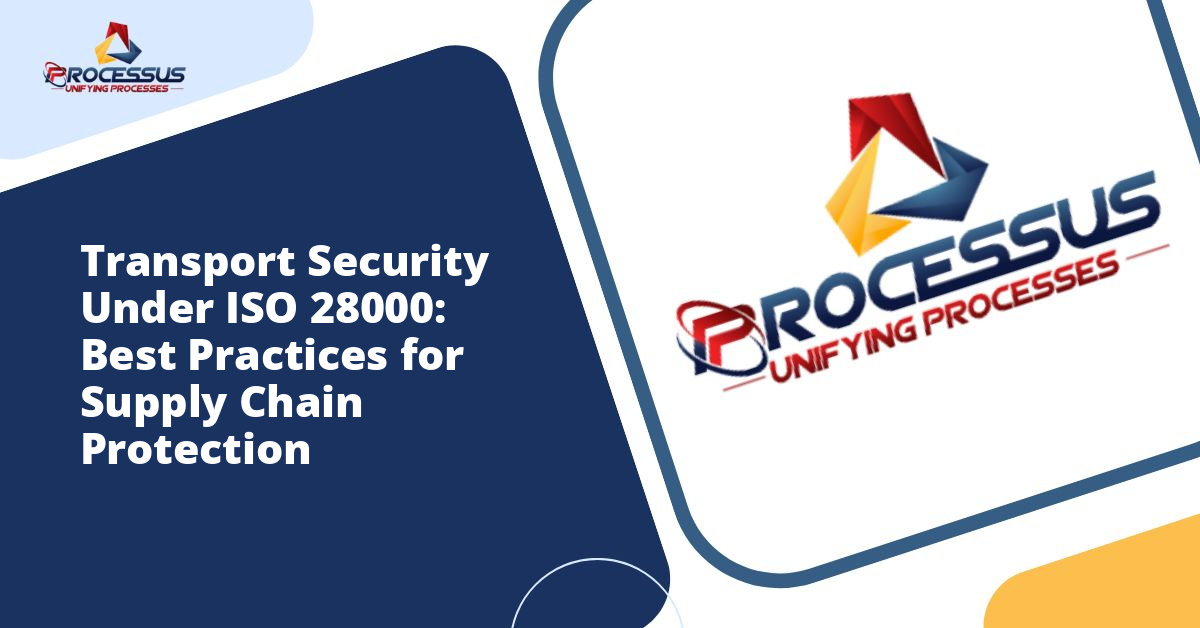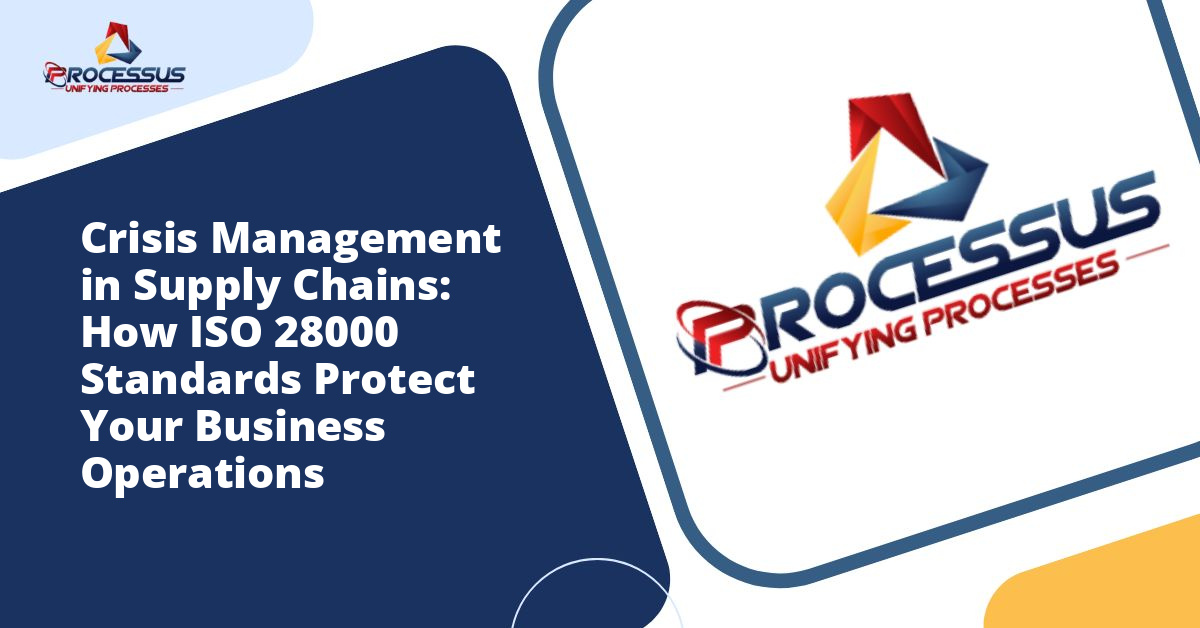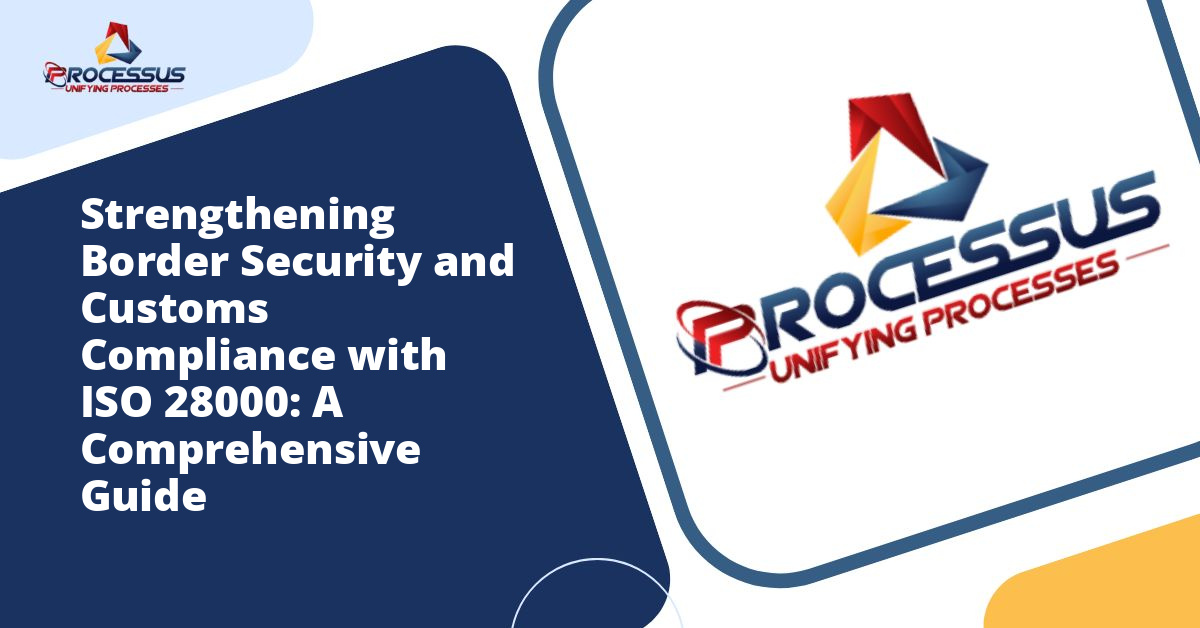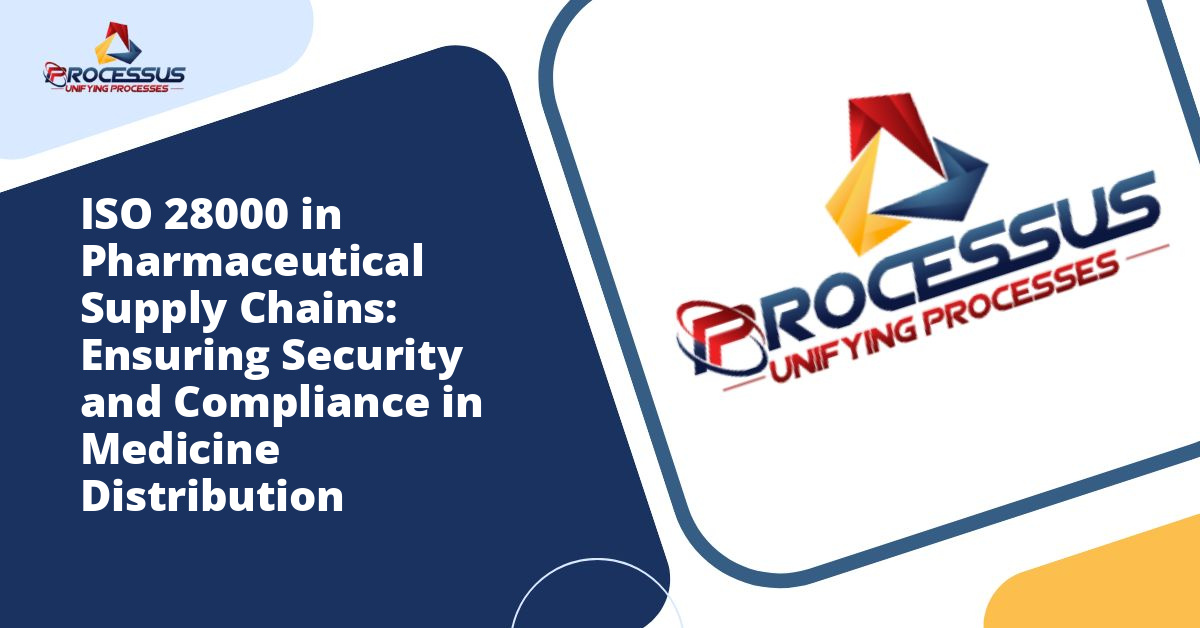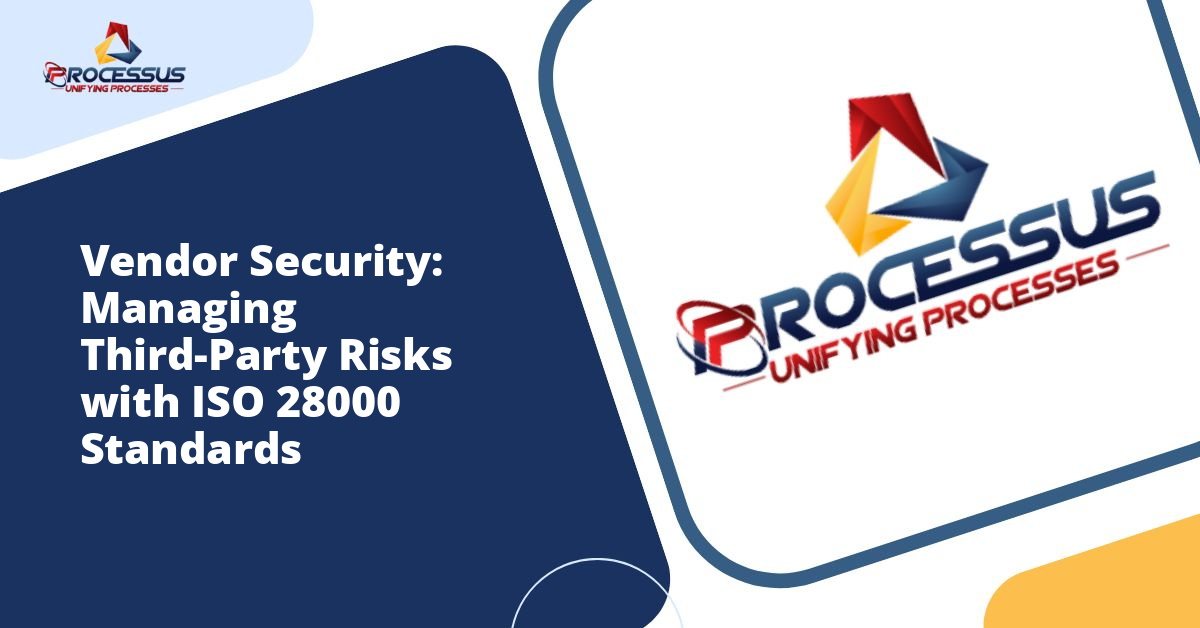In today’s interconnected global economy, the security of transport and supply chain operations has become a critical concern for organizations across all sectors. The ISO 28000 standard provides a comprehensive framework for establishing, implementing, and maintaining security management systems that protect goods, information, and infrastructure throughout the supply chain. Understanding and implementing this standard can mean the difference between seamless operations and devastating security breaches that impact reputation, finances, and regulatory compliance.
This article explores the essential elements of ISO 28000 and presents practical best practices that organizations can implement to strengthen their transport security posture while maintaining operational efficiency and meeting stakeholder expectations. You might also enjoy reading about Protecting Your Supply Chain: Why ISO 28000 Certification Matters for Modern Businesses.
Understanding ISO 28000 and Its Importance
ISO 28000 represents the international standard for security management systems in the supply chain. Developed by the International Organization for Standardization, this framework addresses the growing need for robust security measures that protect goods, personnel, and infrastructure from threats ranging from theft and tampering to terrorism and cyber attacks. You might also enjoy reading about ISO 28000 and Cybersecurity: Protecting Your Supply Chain from Digital Threats in 2024.
The standard applies to organizations of all sizes and types involved in manufacturing, service, storage, or transportation at any stage of the production or supply chain. Its flexible structure allows companies to tailor security measures to their specific operational contexts while maintaining consistency with internationally recognized principles.
The importance of ISO 28000 has grown exponentially as supply chains become increasingly complex and global. Security incidents can result in substantial financial losses, regulatory penalties, damaged reputation, and disrupted operations. By adopting ISO 28000, organizations demonstrate their commitment to security excellence and gain a competitive advantage in markets where security consciousness continues to rise.
Core Components of ISO 28000
The ISO 28000 framework builds upon the Plan-Do-Check-Act management cycle, creating a systematic approach to identifying, assessing, and managing security risks. Understanding these core components helps organizations develop comprehensive security strategies that address current threats while remaining adaptable to emerging challenges.
Security Management Policy
Every effective security management system begins with a clear, well-documented policy that reflects organizational commitment at the highest levels. This policy should articulate security objectives, define roles and responsibilities, and establish the framework for security operations. Leadership must actively champion the policy, ensuring that security considerations are integrated into strategic planning and daily operations.
The policy document serves as the foundation for all subsequent security activities. It should be accessible to all stakeholders, regularly reviewed, and updated to reflect changes in the threat environment, business operations, or regulatory requirements. Organizations that treat their security policy as a living document rather than a static compliance artifact achieve better security outcomes.
Security Risk Assessment
Comprehensive risk assessment forms the cornerstone of effective transport security. Organizations must systematically identify potential threats to their operations, evaluate the likelihood and impact of these threats, and prioritize security investments accordingly. This process requires input from multiple stakeholders, including operations personnel, security specialists, and external experts who understand the broader threat landscape.
The assessment should consider various threat categories, including physical security breaches, cyber attacks, insider threats, natural disasters, and geopolitical instability. Each identified risk should be evaluated for its potential impact on operations, finances, reputation, and regulatory compliance. Organizations that conduct thorough risk assessments can allocate resources more effectively and implement targeted security measures that address the most significant vulnerabilities.
Security Planning and Implementation
Following risk assessment, organizations must develop detailed security plans that outline specific measures, procedures, and controls designed to mitigate identified risks. These plans should address both preventive measures that reduce the likelihood of security incidents and responsive measures that minimize impact when incidents occur.
Implementation requires careful coordination across departments and functions. Security measures must be integrated into existing operational processes without creating unnecessary friction or inefficiency. Successful implementation balances security requirements with operational realities, ensuring that security enhances rather than hinders business objectives.
Best Practices for Transport Security Implementation
While ISO 28000 provides the framework, practical implementation requires thoughtful application of best practices tailored to specific operational contexts. The following practices represent proven approaches that organizations across industries have used to strengthen their transport security posture.
Establish Clear Security Governance
Effective transport security requires clear governance structures that define roles, responsibilities, and accountability throughout the organization. Designate a senior executive as the ultimate authority for security matters, ensuring that security considerations receive appropriate attention at the board level. This executive should have the authority to allocate resources, make policy decisions, and drive cultural change necessary for security excellence.
Create a cross-functional security committee that brings together representatives from operations, logistics, information technology, human resources, and other relevant departments. This committee should meet regularly to review security performance, discuss emerging threats, and coordinate security initiatives across organizational boundaries. Clear governance prevents security from becoming siloed and ensures that security considerations are integrated into all business decisions affecting the supply chain.
Implement Robust Access Controls
Controlling access to facilities, vehicles, cargo, and information systems represents a fundamental security measure. Organizations should implement layered access controls that verify identity, authorize entry based on legitimate business need, and monitor access activities for anomalies.
Physical access controls should include perimeter security, entry screening, visitor management, and secure areas with restricted access. Modern technologies such as biometric authentication, smart cards, and video surveillance systems can enhance access control effectiveness. However, technology should complement rather than replace human judgment and oversight.
Digital access controls are equally important in an era where information systems play critical roles in transport operations. Implement strong authentication mechanisms, enforce least-privilege principles, and regularly review access rights to ensure they remain appropriate. Pay special attention to privileged accounts that have elevated access to critical systems, as these represent high-value targets for adversaries.
Conduct Thorough Personnel Security
People represent both the greatest asset and the most significant vulnerability in any security system. Comprehensive personnel security practices help organizations identify trustworthy individuals while detecting and deterring insider threats.
Begin with rigorous screening processes for all personnel who will have access to sensitive areas, cargo, or information. Background checks should be proportionate to the level of access granted and should comply with applicable privacy regulations. However, recognize that screening is a point-in-time assessment and must be supplemented with ongoing monitoring and awareness.
Provide regular security awareness training that helps personnel recognize security threats, understand their responsibilities, and know how to report concerns. Training should be engaging, relevant to daily responsibilities, and reinforced through regular communications. Organizations that cultivate a security-conscious culture benefit from thousands of vigilant employees who serve as an early warning system for potential threats.
Secure the Physical Transport Environment
The physical security of vehicles, cargo, and transport infrastructure requires particular attention given the mobile nature of transport operations. Organizations should implement security measures appropriate to the value and sensitivity of transported goods as well as the risk profile of transport routes.
For high-value or sensitive cargo, consider using sealed containers with tamper-evident seals, GPS tracking systems, and route monitoring. Establish secure parking facilities for loaded vehicles and implement protocols for drivers to follow if they must stop during transit. Regular inspections of vehicles and containers help detect unauthorized modifications or concealed contraband.
Route planning should consider security factors alongside traditional considerations such as distance, time, and cost. Avoid routes that pass through high-crime areas or unstable regions when feasible. When security risks are unavoidable, implement additional protective measures such as convoy operations or security escorts.
Integrate Technology Solutions
Modern technology offers powerful capabilities for enhancing transport security, from real-time tracking and monitoring to advanced analytics that detect anomalies. However, technology should be implemented strategically based on risk assessment rather than adopted simply because it is available.
GPS tracking systems provide visibility into vehicle locations and routes, enabling organizations to detect deviations from planned routes or unexpected stops. When integrated with geofencing capabilities, these systems can generate automatic alerts when vehicles enter or exit designated areas. This real-time visibility supports both security and operational efficiency.
Video surveillance systems protect facilities and provide evidence for investigations when incidents occur. Modern systems with analytics capabilities can detect suspicious behaviors such as loitering, unauthorized access attempts, or unusual movement patterns. However, organizations must balance surveillance capabilities with privacy considerations and ensure compliance with applicable regulations.
Cybersecurity technologies protect the information systems that increasingly underpin transport operations. Firewalls, intrusion detection systems, encryption, and security information and event management platforms help defend against cyber threats. As transport systems become more connected and automated, cybersecurity becomes inseparable from physical security.
Develop Strong Partnership Networks
Transport security cannot be achieved in isolation. Organizations must develop strong relationships with business partners, law enforcement agencies, regulatory authorities, and industry peers. These partnerships enable information sharing, coordinated responses to threats, and collective improvements in security standards.
Establish clear security requirements for suppliers, carriers, and other business partners. Include security provisions in contracts and conduct periodic audits to verify compliance. Organizations with mature security programs may provide guidance and support to help partners improve their security capabilities, recognizing that supply chain security is only as strong as the weakest link.
Participate in industry associations and information sharing forums that focus on security matters. These communities provide valuable intelligence about emerging threats, successful security practices, and regulatory developments. Law enforcement agencies often participate in these forums, creating opportunities for building relationships that prove valuable during incidents or investigations.
Plan for Incident Response
Despite best efforts at prevention, security incidents will occasionally occur. Organizations must develop comprehensive incident response plans that enable rapid, coordinated responses that minimize impact and facilitate recovery. These plans should address various incident scenarios, from cargo theft and tampering to cyber attacks and natural disasters.
Incident response plans should clearly define roles and responsibilities, establish communication protocols, and outline specific actions for different types of incidents. Regular exercises and simulations help personnel understand their roles and identify gaps in plans before real incidents occur. After incidents or exercises, conduct thorough reviews to capture lessons learned and improve response capabilities.
Establish relationships with external resources that may be needed during incidents, such as law enforcement agencies, forensic specialists, crisis communication firms, and legal counsel. Having these relationships in place before they are needed enables faster, more effective responses when time is critical.
Maintain Comprehensive Documentation
ISO 28000 requires organizations to maintain documented information that demonstrates the effective implementation and operation of the security management system. Documentation serves multiple purposes, including providing guidance to personnel, demonstrating compliance, supporting investigations, and facilitating continuous improvement.
Key documents include security policies and procedures, risk assessments, training records, audit reports, incident records, and corrective action plans. These documents should be controlled to ensure that personnel always access current versions and that changes are properly managed. However, avoid excessive documentation that creates bureaucracy without adding value.
Documentation should be protected with appropriate access controls given its sensitivity. Unauthorized disclosure of security documentation could provide adversaries with valuable information about vulnerabilities and security measures. Balance the need for accessibility with security requirements.
Implementing a Culture of Security
Technical measures and formal procedures provide the foundation for transport security, but lasting success requires cultivating a culture where security is valued and practiced by everyone in the organization. Cultural transformation takes time and sustained effort but delivers substantial benefits.
Leadership must consistently demonstrate commitment to security through words and actions. When leaders prioritize security in decision making, allocate adequate resources, and hold personnel accountable for security responsibilities, others follow their example. Conversely, when leadership treats security as secondary to other priorities, personnel quickly learn that security can be compromised for convenience or short-term gains.
Recognize and reward security-conscious behavior. When personnel identify vulnerabilities, report concerns, or suggest improvements, acknowledge their contributions publicly. Organizations that punish messengers or ignore security concerns create cultures where problems are hidden rather than addressed.
Make security awareness part of ongoing communications rather than limiting it to annual training sessions. Regular updates about threats, security incidents (anonymized and sanitized as appropriate), and security improvements keep security top of mind. Use multiple communication channels to reach personnel in different roles and locations.
Measuring and Improving Security Performance
ISO 28000 requires organizations to monitor, measure, analyze, and evaluate security performance. Effective performance measurement provides insights into the effectiveness of security measures, identifies areas for improvement, and demonstrates value to stakeholders.
Develop key performance indicators that provide meaningful insights into security effectiveness. Leading indicators such as security training completion rates, vulnerability remediation times, and near-miss reporting rates provide early signals about security posture. Lagging indicators such as incident frequency and severity measure ultimate outcomes but do not provide early warning.
Conduct regular internal audits that assess compliance with ISO 28000 requirements and the effectiveness of implemented security measures. Audits should be conducted by competent individuals who are independent of the activities being audited. Audit findings should be documented, shared with relevant stakeholders, and addressed through corrective action plans.
Management reviews provide opportunities for senior leadership to assess security performance, review audit findings, evaluate the continuing suitability and effectiveness of the security management system, and make strategic decisions about security investments and priorities. These reviews should occur at planned intervals and whenever significant changes in the threat environment or business operations warrant additional attention.
Certification and Continuous Improvement
Many organizations pursue formal certification to ISO 28000 through accredited certification bodies. Certification provides independent verification that the security management system meets standard requirements and can enhance reputation with customers, regulators, and other stakeholders. However, certification should be viewed as a milestone rather than a destination.
The security landscape continuously evolves as new threats emerge, technologies advance, and business operations change. Organizations committed to security excellence embrace continuous improvement, constantly seeking ways to enhance security effectiveness while maintaining operational efficiency. This requires maintaining awareness of emerging trends, learning from incidents and near misses, and remaining open to new approaches.
Stay informed about developments in the security field through professional associations, conferences, publications, and peer networks. Consider how innovations such as artificial intelligence, blockchain, and Internet of Things technologies might enhance security capabilities or introduce new vulnerabilities. Organizations that anticipate change position themselves to adapt proactively rather than reactively.
Conclusion
Transport security under ISO 28000 represents a comprehensive, systematic approach to protecting supply chain operations from diverse and evolving threats. By implementing the best practices outlined in this article, organizations can significantly strengthen their security posture while maintaining the operational efficiency necessary for competitive success.
Success requires commitment from leadership, engagement from personnel across all functions, thoughtful application of technology, strong partnerships, and a genuine culture of security awareness. Organizations that view security as an enabler of business success rather than a compliance burden achieve the best outcomes, protecting assets and reputation while building stakeholder confidence.
The journey to security excellence is ongoing. As threats evolve and operations change, security measures must adapt. Organizations that embrace ISO 28000 principles and commit to continuous improvement position themselves to navigate an uncertain future with confidence, resilience, and security.

